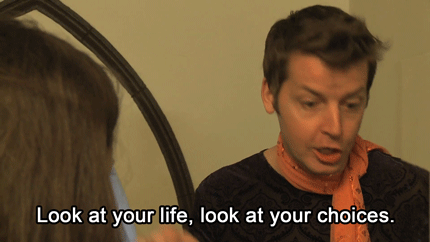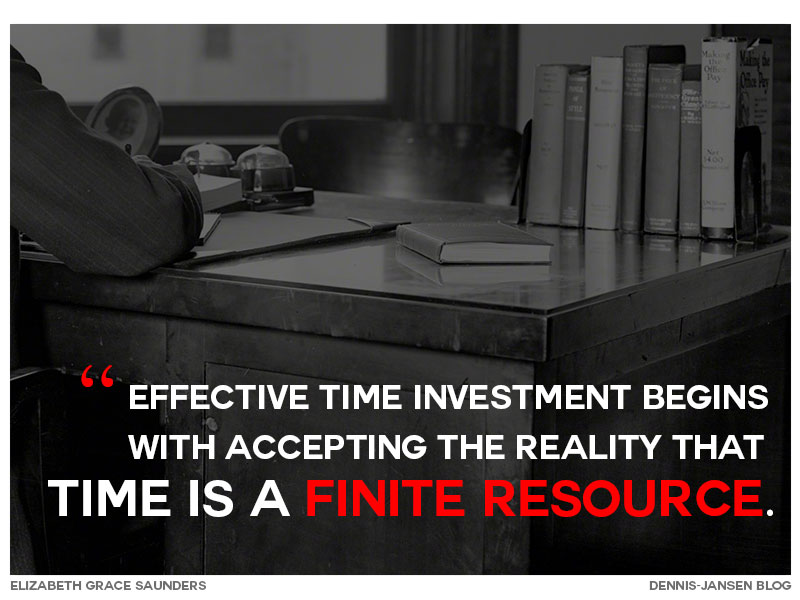Figuring Out This Time Management Thing
I am the guy who signs up for too much – the guy who takes too many classes, works too many jobs, and joins too many organizations.
- In high school, I was gunning for the valedictorian spot while attending community college classes at night and participating in several extra-curriculars.
- During college, I maxed-out my course limit, worked as a residential assistant in a huge dorm, had side-jobs, joined a frat, ran student clubs, and kept a pretty busy social schedule.
- Things only got busier in law school – with internships, boys, dogs, and eventually a career.
I felt that time management was always a problem for me.
Or rather, I always thought that I struggled with time management until I recently read Elizabeth Grace Saunders’ time management article in the Harvard Business Review. Saunders reframes time management issues for what they often are: overcommitment problems.
Effective time investment begins with accepting the reality that time is a finite resource. This acknowledgment frees you to make choices about what you will and won’t do so you can invest more in what’s most important, feel good about what you do and don’t get done, and still have disposable time left to relax and enjoy yourself.
According to Saunders, the single most important factor in feeling like a time investment success or failure is “whether or not your expectations of what you will accomplish align with how much time you have to invest.” 
Saunders divides time expenditures into three categories:
- Self-care: the basic activities that keep you healthy and functioning such as sleeping, eating, hygiene, etc.
- External Expectations: largely non-optional commitments such as work, pet care, school, and relationships.
- Internal Expectations: more-personal pursuits such as travel, religion, personal development, and hobbies.
How to Create a Time Management Budget
Saunders provides a simple and useful time budgeting formula which allows anyone to see whether they are overcommitted:
Time investment success
(External expectations) + (Internal expectations) ≤ 24 hours — (Self-care)
Time debt stress
(External expectations) + (Internal expectations) > 24 hours — (Self-care)
The interesting thing about both formulations is that self-care isn’t optional.
I remember juggling 20-40 hours of freelance work on top of my fulltime job in Minnesota. What inevitably suffered was the supposedly non-negotiable “self-care” portion of my day – I didn’t get enough sleep, ate poorly, and slowly gained weight. It was an unnecessarily stressful time of my life, but it thankfully only lasted two years. The crazy schedule ended when my surprise promotion at Thomson Reuters made me drop my freelance clients and focus on a single job. This meant that I could simplify my life without having a “huge reverse midlife crisis” ala Fabrice Grinda. I’m trying not to recreate my chaotic Minnesota lifestyle in Dallas. The social and professional obligations are slowly piling up here however, so I am being cautious not to accept too many freelance clients or social invites.
Time budgeting is depressing because it forces you to accept your limits.
 I want to say yes to every committee appointment, freelance project, and party invite, but time budgeting makes me realize that this will come at a cost to my health.
I want to say yes to every committee appointment, freelance project, and party invite, but time budgeting makes me realize that this will come at a cost to my health.
Here’s what my budget looks like:
Self-care: 10 hours
- Sleep – 8 hours
- Food & Hygiene – 1 hour
- Working out – 1 hour
So this means that I have 14 hours left for external and internal expectations. External expectations: 10 hours
- Work – 9 hours a day (minimum)
- Dog care – 1 hour a day (minimum)
So there are really only 4 hours in the day for everything else – consulting, learning new skills, friends, blogging, and trashy reality TV shows. 
Creative Accounting
There are a few ways to maximize the amount of free time that I have to pursue “internal expectations”
- Eat lunch while working and go to the gym during my “lunch hour.”
- Avoid working longer hours by effectively managing my energy.
- Get ahead of my workload and then use my “free” time to earn more work-related certifications.
- Combine social and workout time by inviting friends to the gym or active activities such as dog walks, swimming, or biking.
- Making weekends count by squeezing in work, freelance, and blogging.
These double-dipping strategies only go so far – there are just some commitments that I will have to say no to from now own so I don’t wind back up in the stress loop that I left in Minnesota.






No Comments